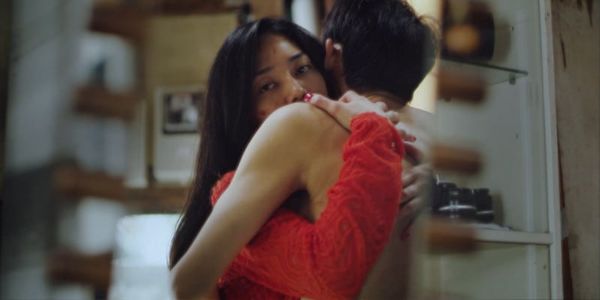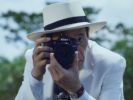Eye For Film >> Movies >> Woman Of The Photographs (2020) Film Review
Woman Of The Photographs
Reviewed by: Jennie Kermode

A film about self-image and the desire to be liked which borrows classic cinematic imagery left right and centre in a desperate attempt to win such favour for itself, Takeshi Kushida’s Woman Of The Photographs has many admirable qualities but is difficult to like. For all its elegance, there's a neediness and an inherent dishonesty about it which continually distract from the development of its central ideas.
Hideki Nagai plays Kai, a photographer who, like most in the business today, makes art on the side whilst making his living taking and/or photoshopping sappy portraits of customers keen to meet conventional beauty standards. Privately, he holds these customers in contempt, apparently unaware of the context in which their photographs are being used - that is, of their need to compete in a world where everybody's else's pictures have been edited too. Life is simpler for him. He has inherited his business, so has never had to compete for a job, and he shows no interest in romantic liaisons; a good son of Japan, he is wholly focused on work. This is not to say that he lacks vanity. We observe him at his beauty routines; we see his image caught in mirrors. The difference, perhaps, is that he evaluates his appearance for himself - eating dinner alone but for his pet praying mantis, he neither needs nor expects validation from others.

Everything changes for Kai when he meets Kyoko (Itsuki Otaki). He's on an insect-spotting expedition in the forest; she has just fallen out of a tree where she was trying to take a photo for her Instagram fans. This film has been compared with the work of Brian De Palma and its certainly shares his inclination towards voyeurism - it takes all of five minutes for Kyoko to be bending over like a rookie camgirl whilst the camera lingers on her slender yet perfectly curved posterior. Kai, of course, merely stands there like a rabbit in headlights, whilst she is immediately and inexplicably fascinated by this glaikit-looking man two or three decades her senior, and invites herself to ride home in his car. It's the beginning of a process of inveigling herself into his life, a process whose inherent absurdity the film never seems willing to admit to.
There is, perhaps, a comment here on the increasing tendency towards social isolation in modern Japan. None of the characters we meet seems to have any real extant emotional connections, with the exception of one, whose feelings for a deceased loved one ultimately inform the film's transcendent moment. Kyoko devotes herself to the central protagonist as if that's what women were for. He photographs her in the same insipid way as his other models, airbrushing out the wound she acquired when falling from the tree, a wound she can't let alone.
In time, the film goes on to explore the idea that being open about such a 'flaw' might represent true beauty. it's a twee idea, not least because it's presented like a revelation, notwithstanding that it's a very old concept in Japanese culture, as illustrated by kintsugi tradition. International cinema has certainly never shied away from fetishising 'broken' women. What's more, it's played very, very safe. The primary wound may be striking but there's nothing aesthetically hideous about it. The two delicate red lines that mark Kyoko's cheek are the equivalent of the classic Hollywood bruise, designed to enhance the appearance of the cheekbone. Kyoko (like Otaki) is a former ballet dancer and the marks do little to distract from her conventionally appealing figure. In essence, Kyoko remains a conventional beauty. There is nothing radical here.
Fortunately, in its second half, the film develops the psychology of ts characters in a more interesting way (and its appearance in the Fantasia 2020 line-up starts to make a bit more sense). Again, the ideas it's playing with - as both Kai and Kyoko become increasingly obsessed by the wound - are not new, but they're stylishly expressed and there's nothing to fault in the performances. Together with a reference to plastic surgery, they strongly evoke the work of David Cronenberg, but the artistry here is sufficient to compete. The obvious cheesy metaphor about the mantis aside, there's a lot of good material here. What Takeshi steals, he makes his own.
Gorgeously shot and finished to a very high standard, Woman Of The Photographs is a beguiling beauty of a film. It may take viewers a moment to recognise its serious flaws, and to realise that there's not nearly as much substance under the surface as it pretends.
Reviewed on: 29 Aug 2020















